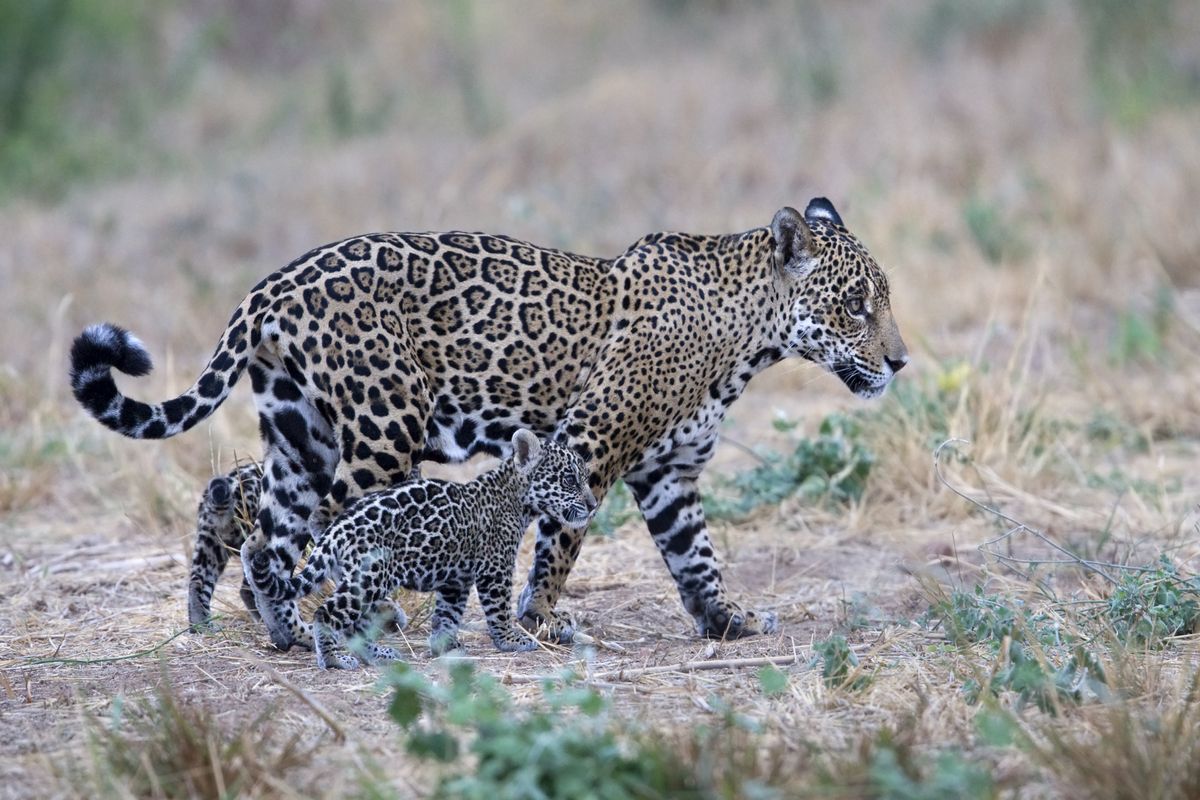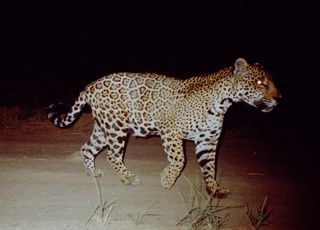
Jaguar Photo Reveals Conservation Success Story

A photo released by a conservation group today (Dec. 21) shows a female jaguar and her two cubs in Bolivia's best-conserved national forest.
The jaguars were photographed near the Isoso Station of the Santa Cruz-Puerto Suarez Gas Pipeline in Kaa Iya National Park in Bolivia. The adult jaguar, nicknamed Kaaiyana, has been seen with her cubs in the area for over a month and has lived near the park for at least six years, according to conservationists with the Wildlife Conservation Society, which releases camera-trap photos on an ongoing basis.
"Kaaiyana's tolerance of observers is a testimony to the absence of hunters in this area, and her success as a mother means there is plenty of food for her and her cubs to eat," said John Polisar, coordinator of the Wildlife Conservation Society's jaguar conservation program.

The Wildlife Conservation Society has conducted extensive research in the area and estimates that at least 1,000 jaguars live in the Gran Chaco Jaguar Conservation Unit, a 47,000-square-mile (124,000-square-km) area spanning southern Bolivia and northern Paraguay.At more than 13,200 square miles (34,400 square kilometers), Kaa Iya National Park is the largest protected area in Bolivia. The park guards the biggest and best-conserved dry forest in the world. The creation of Kaa Iya in 1995 marked the first time in South America that a protected area was established through the initiative of an indigenous people, the Guaraní-Isoceño.
The Kaa Iya Foundation, supported by the Wildlife Conservation society and private energy companies, surveyed the jaguars in the area. Kaayiana was first seen at the Isoso site in 2005 with male jaguars, and again in 2006 with a cub. The Kaa Iya park guards work to prevent illegal hunting and settlements along the right-of-way to the gas pipeline and ensure the protection of wildlife, including jaguar prey, in the park.
"The photographic histories of jaguars in the area by WCS and the reproductive success of this female are testimony that conservation efforts have been effective," said Julie Kunen, director of the Wildlife Conservation Society's Latin America and Caribbean Programs.
Follow OurAmazingPlanet for the latest in Earth science and exploration news on Twitter @OAPlanet and on Facebook.
Sign up for the Live Science daily newsletter now
Get the world’s most fascinating discoveries delivered straight to your inbox.











